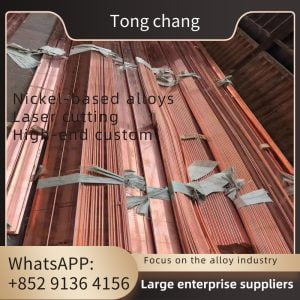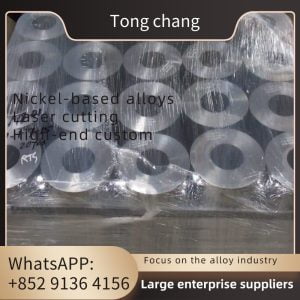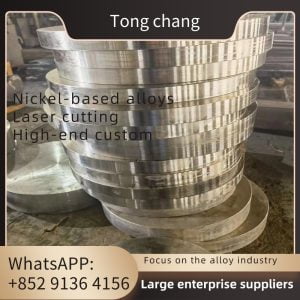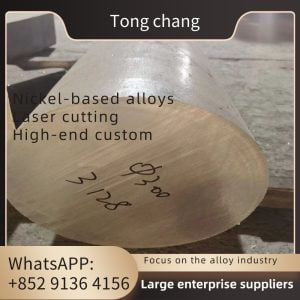| Standard: | ASTM A182/ASME SA182 | Material Grade: | F316L |
|---|---|---|---|
| Size: | As Per Client’s Drawing | NDT: | UT, PT, MT |
| Application: | Heat Exchanger, Boiler, Pressure Vessel, Chemical Reactor, Power Plant, Energy , Petrochemical | Shape: | Cylinder |
| High Light: | Heat Exchanger Part Tubesheet, F316L Tube Sheets, Stainless Steel Tubular Exchanger | ||
ASTM A182 F316L STAINLESS STEEL TUBESHEET HEAT EXCHANGER PART CUSTOMIZED
What is tubesheet?
A tube sheet is a plate which is used to support the tubes in a shell-and-tube heat exchanger. The tubes are aligned in a parallel way, and supported and held in place by tube sheets. The tube sheet is a circular plate which is perforated so that the tubes can fit through the openings.
Tubesheets are one of the most important components of Shell and Tube Heat Exchangers. tube sheets are usually made from a round flat piece of forged plate which are machined with holes drilled for the tube ends in a precise location and pattern relative to one another. Tube holes can be drilled and reamed and can be machined with one or more grooves that greatly increases the strength of the tube joint. Fabrication Our workshops have been equipped with modern machineries including CNC drilling machines in order to make any kind of tube sheets. tube sheets are widely used for fabrication of heat exchangers in any configuration. All machining activities such as lathe machining, drilling, reaming, taping, grooving, and surface milling can be carried out exactly according to client’s drawings and specifications. As all of drilling activities is programmed computer and done by state of art CNC machineries, there would not be any possible mistake caused by human.
Tubesheet Analysis Method
Displays the standard to use for analysis:
- TEMA – Tubular Exchanger Manufacturers Association
- ASME – ASME Section VIII, Division 1, Section UHX or ASME Section VIII, Division 2, Part 4
- The option selected in Design Code determines whether the software uses Division 1 or Division 2.
- PD 5500 (British Code) – British Pressure Vessel Code, Section 3.9, Flat Heat Exchanger Tubesheets
- EN-13445
Exchanger Type
Select the type of heat exchanger.
U-Tube has only one tubesheet. The tubes are bent in the form of a "U." The bundle can removed for maintenance, but the inside of the tube is harder to clean because of the bend.
Fixed has two tubesheets that are fixed at each end of the exchanger and are connected to each other by straight tubes. Both the tubesheets are stationary, so differential thermal expansion can develop between the shell and the tubes. An expansion joint is sometimes required to absorb the thermal growth. You must select a fixed type of tubesheet exchanger to perform finite element analysis (TONG CHUANG) on expansion joints.
Floating has one tubesheet that is fixed (stationary) and one that is free to move. Because one tubesheet floats, any differential thermal expansion between the shell and tubes is absorbed. This category of exchangers is the most versatile and also the costliest. Tubes can also be cleaned easily compared to U-tube exchangers.
SS316L Chemical Composition
| Grade Symbol | UNS Number | Alloy | Elements | Composition% |
| F316L | S31603 | 18 chromium, 8 nickel, modified with molybdenum, low carbon 316LG | Carbon | 0.030 max |
| Manganese | 2.00 max | |||
| Phosphorus | 0.045 max | |||
| Sulfur | 0.030 max | |||
| Silicon | 1.00 max | |||
| Nickel | 10.0-15.0 | |||
| Chromium | 16.0-18.0 | |||
| Molybdenum | 2.00-3.00 | |||
| Nitrogen | 0.10 |








